Tyan is out with a number of 3rd Generation Intel Xeon Scalable (Ice Lake) servers for the mainstream market. Specifically, these servers are largely built around two motherboards which take advantage of Intel’s new platform capabilities.
Tyan Tempest HX S7120, S5642, and Thunder HX TS65-B7120
Tyan has two motherboards for the new Intel Ice Lake Xeon series that focuses on providing platforms that fit into more traditional chassis. There is the Tyan Tempest HX S7120 which is the company’s dual-socket SSI EEB motherboard.
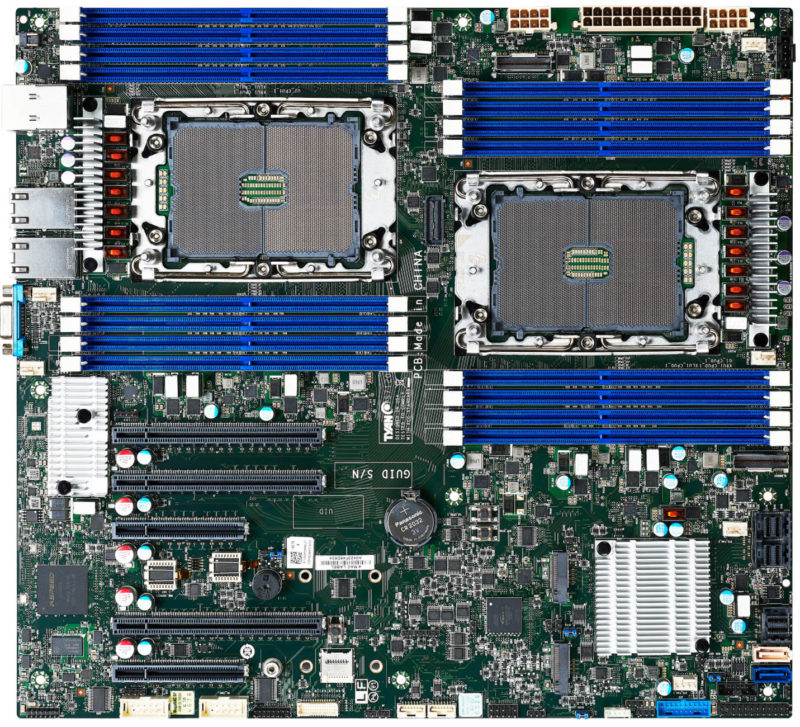
For those wondering why the motherboards are not ATX or EATX form factors, this simply comes down to how much larger the new platforms are getting. Tyan needs to fit 8-channels of memory per socket and the sockets are slightly larger which means motherboards must also get larger. In this generation, we also have more PCIe lanes, up to 64x PCIe Gen4 per socket and we can see on this picture of the Tyan S7120GM2NRE-2T that Tyan also has the Intel Altera MAX 10 FPGA required for Intel Platform Firmware Resilience or PFR (but we did not confirm this actually supports that feature.) Tyan is also adopting the Aspeed AST2600 in this generation which is a next-generation BMC. The S7120 supports 3x PCIe Gen4 x16 slots and two x8 slots. There are also M.2 slots for SSDs and two PCIe x8 SlimSAS connectors onboard.
Tyan typically uses these motherboards as the basis for its own systems such as the Thunder SX TS65-B7120. That is a 2U dual-socket solution based on the S7120 motherboard that is just under 26″ deep.
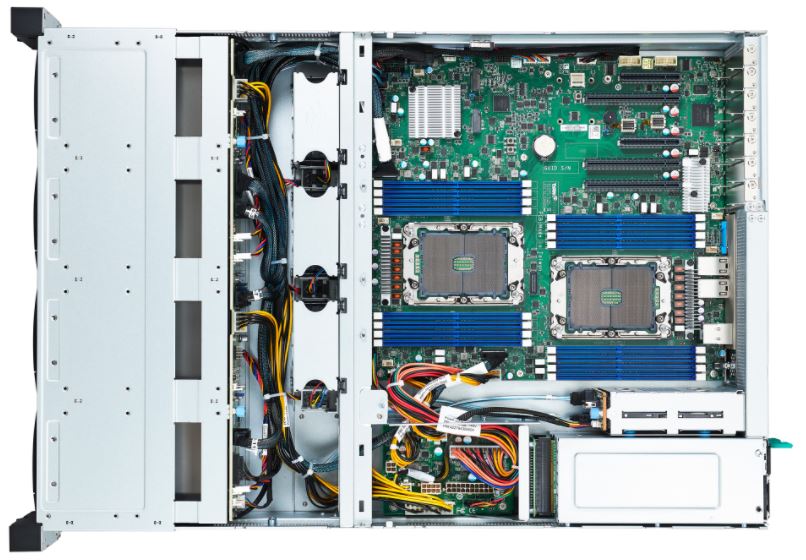
We could not find photos of the single-socket S5642 that is a smaller SSI CEB platform. Single socket solutions may be a bit later in availability.
Tyan Tempest CX S7126, Thunder CX GC68-B7126, and Thunder CX GC68A-B7126
The Tyan Tempest CX S7126 is a dual-socket 8 DIMM per socket “EATX” motherboard. We have the quotations because officially EATX is 13″ not 13.1″. The CPUs and DIMM slots are placed across the motherboard which allows for better airflow in a rackmount chassis. This platform also has two PCIe Gen4 x32 slots that are designed for risers in rackmount chassis. There is also an OCP NIC 2.0 slot onboard for networking and a single M.2 SSD slot.
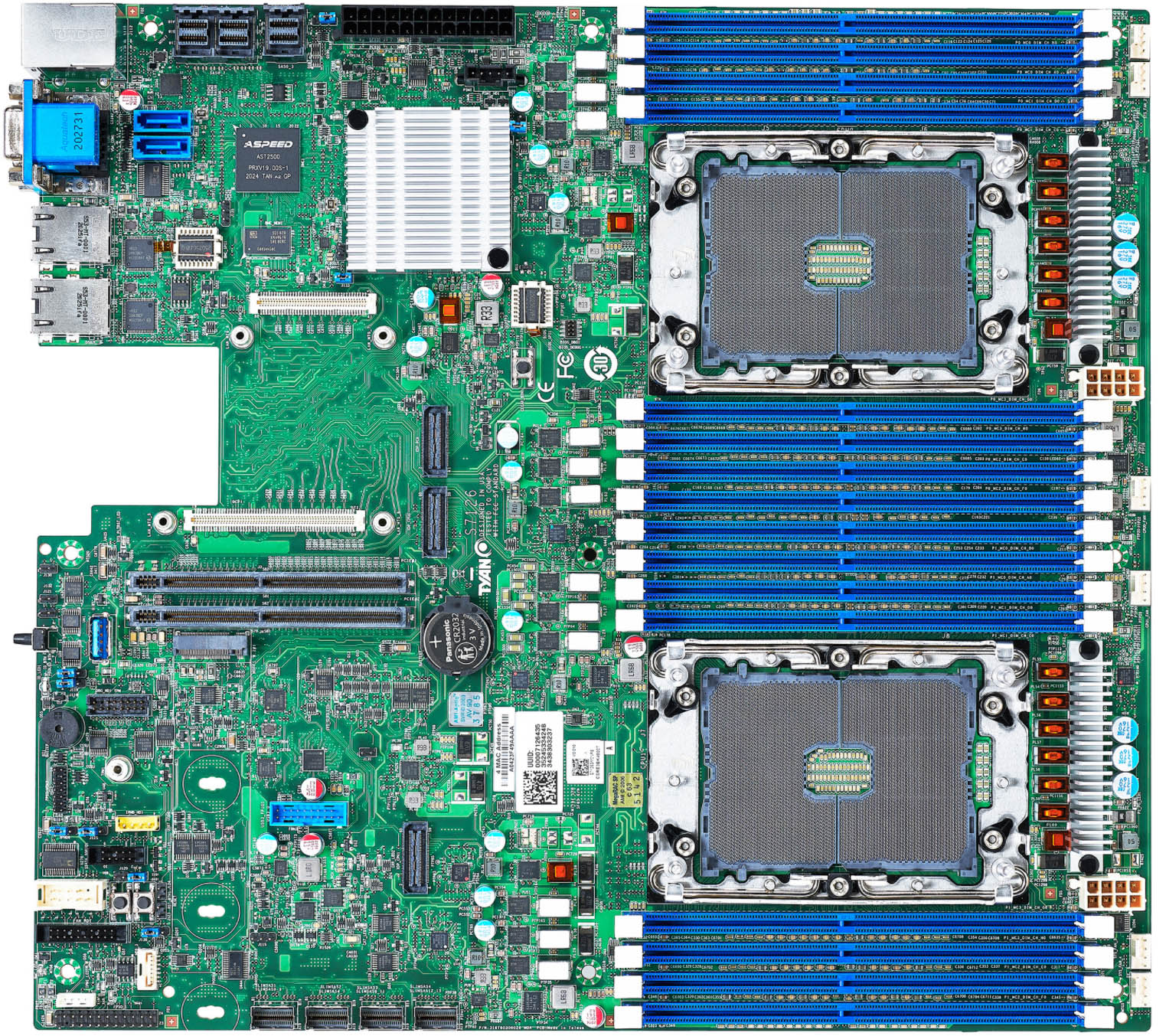
The Thunder CX GC68-B7126 and Thunder CX GC68A-B7126 are 1U platforms based on this motherboard. The GC68 has 12x 2.5″ drives while the GC68A has four 3.5″ and four 2.5″ drive bays similar to the Tyan Transport CX GC68B8036-LE we reviewed.
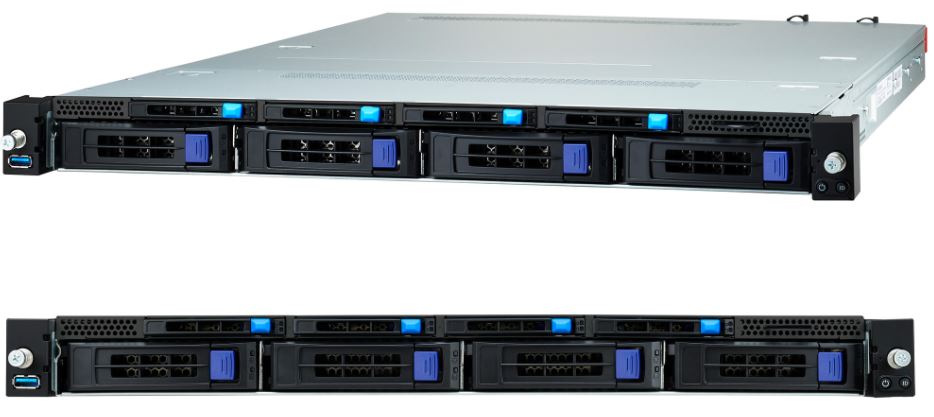
Effectively Tyan is offering a dual-socket Intel Xeon alternative to that AMD solution which you can learn more about here:
Final Words
Overall, it is good to see Tyan adding to its Intel Xeon portfolio. We expected Tyan would come out with new systems based on Ice Lake Xeons. Something that we were slightly surprised with is how Tyan is creating differentiation between its AMD and Intel lines.
If you have not already done so, you can check out our Intel Xeon Ice Lake Edition Marks the Start and End of an Era review of the new Intel platform. Here is a video explaining what Intel has with this generation and will provide some context for Tyan’s launch.

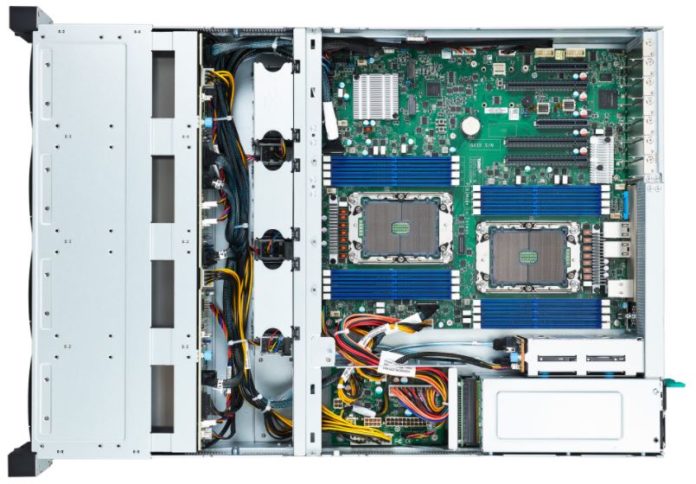



This isn’t a Tyan question specifically, it looks like PFR requires the same Altera FPGA to implement for all supported Xeons of this generation; but can anyone explain why it’s an FPGA, what you generally go to when you need logic you can reconfigure after the fact(or just don’t have the volume to justify an ASIC; but I doubt that is Intel’s problem in this case), would be the part used to implement hardware root of trust/platform immutability; rather than signature verification capability and enough efuses to burn some keys into in the PCH; or something implemented in the Management Engine component(which, at least on client platforms, is already baked in very, very, deep and has a number of firmware verification features)?
Do FPGAs have mature anti-tamper features because people using them have been worried about unauthorized reprogramming for some time now, where people shipping ASICs haven’t had to worry? Is PFR doing something that does require nontrivial updates to the logic, requiring an FPGA rather than an ASIC, rather than just firmware signature verification that will be the same job for the life of the product?
I’ve tried to find an explanation in Intel’s docs; but haven’t had luck. I’d appreciate a pointer if anyone has one.